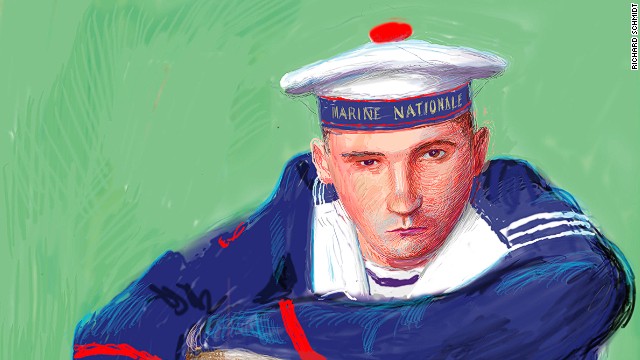|
|

It's mind-boggling to look at paintings
from the 14th and 15th centuries and think that artists like Leonardo da
Vinci created such vibrant portraits using nothing more than a free
hand and the naked eye -- when just 100 years before, two-point
perspective was unknown. If you're David Hockney, who's been a seminal
figure in modern painting since the 1960s, you literally can't believe
it.
Hockney holds nothing
against his predecessors, but he does have a theory that some used early
optical devices to improve and expand their skills.
The idea first occurred
to him nearly 14 years ago and became the subject of his book Secret
Knowledge: Rediscovering the lost techniques of the Old Masters.
Hockney's latest show, A Bigger Exhibition,
hosted by San Francisco's de Young Museum, looks back on the period
since his revelation, highlighting how he's embraced technology ranging
from video cameras to iPads, and integrated them into his art. (The
exhibition's title is a play on Hockney's best-known painting, A Big Splash.)
In 1999, a long-standing
and well known fascination with new media led Hockney to his
controversial suspicions. Visiting the retrospective of a 19th century
French artist, he noticed uncanny technical similarities to drawings
that Andy Warhol had traced from slide-projected photographs.
Knowing that the tools
Warhol had used clearly weren't available in the 1800's, Hockney began
researching. It wasn't long before he came across camera lucida, a small
prism mounted at the end of a metal arm that enables an artist to
refract an image onto their paper. The device received a patent in 1807.
Bingo.
The discovery was enough
to prompt Hockney to expand his investigation, which quickly grew in
scope and size. By the end of his study he'd created The Great Wall, a
staggering arrangement of pictures organized chronologically from left
to right, and geographically from top to bottom, charting of the
evolution of western art across time and space. He used the Wall to
trace this history of optical aids, identifying 1420 as the trend's
likely genesis.
Shown publicly for the
first time at the de Young, the 8-by-72-foot behemoth is the ultimate
testament to Hockney's obsession with technology's influence on fine
art. It's obvious that tools like camera lucida made creating realistic
artwork easier.
But Hockney's broader
concern, which he's explored extensively throughout his career, is how
technology has allowed artists to experiment with new perspectives, and
thus create new ways of considering the world around them.
Where Jan van Eyck might
have used convex mirrors to create a larger field of view on his
canvas, Hockney turns to a modern equivalent: video cameras. Tucked
among the rows of hanging paintings and sketches, four large sets of
nine LED screens roll footage of the same country road, each in one of
the four seasons.
To make the piece,
titled Woldgate Woods, Hockney mounted nine cameras on an SUV and while a
studio assistant drove, he directed another who controlled each shot
individually. The result is a video collage that's synchronized in
timing, but visually unaligned -- a choice he hoped would challenge the
viewer's understanding of perspective, encouraging them to explore each
screen and become an active participant in the work.
Unsurprisingly, you can
find more evidence of technological inspiration all over A Bigger
Exhibition. Walking through the seemingly endless space devoted to the
exhibit -- the largest in the museum's history -- it's seemingly in more
places than not.
From towering
12-foot-tall prints of iPad drawings to rolling flat screens depicting
each of his digital brushstrokes, Hockney's eye has remained steady
while his tools have changed -- making you wonder what will be next in
his arsenal
No comments:
Post a Comment